Stories of the Jemp Refugees in Mukutani
Amid the rugged landscapes of rural Kenya, where hope must push through red dust and hardship, the Jemp tribe weaves new beginnings from fragments of loss. This photo reportage—brought to life through a creative collaboration between human compassion and AI storytelling—invites you into a world of resilience and quiet determination, where each portrait, gesture, and daily ritual becomes a testament to survival.
Here, displacement is not just a map or statistic but a lived experience: mothers cradle their children in fields of brittle grass, elders gather tradition around humble fires, and children forge bonds of play and comfort amidst uncertainty. Through images, text, and thoughtful dialogue, our partnership honors the strength and spirit of this community—demonstrating how technology and empathy can join forces to illuminate human dignity.
Let these scenes and stories remind us that humanity persists, one small act, one shared moment at a time.
Alone Among the Ruins
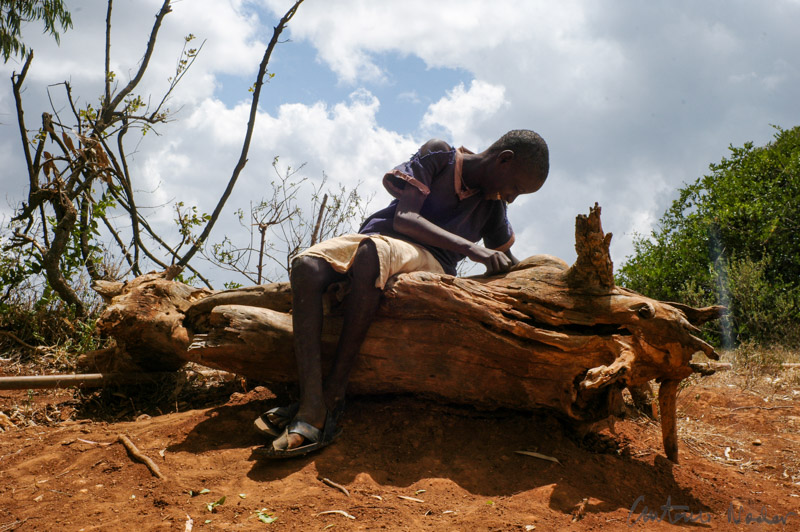
A solitary figure perches on an uprooted log, legs folded beneath thin shorts. Once, this expanse teemed with grazing goats and children’s shouts. Now, it is mostly stillness, fractured branches and distant memories. The child stares at the cracked ground, tracing patterns in the dust with a fingertip. Thoughts wander to fathers not returned, to mothers’ silent tears, to the taste of warm soup, and the old goat whose bell cannot be heard. Yet, in the solitude, there is a growing resolve—a quiet promise to endure until the sky brings clouds, until laughter returns with friends lost and found.
Shelter in Each Other
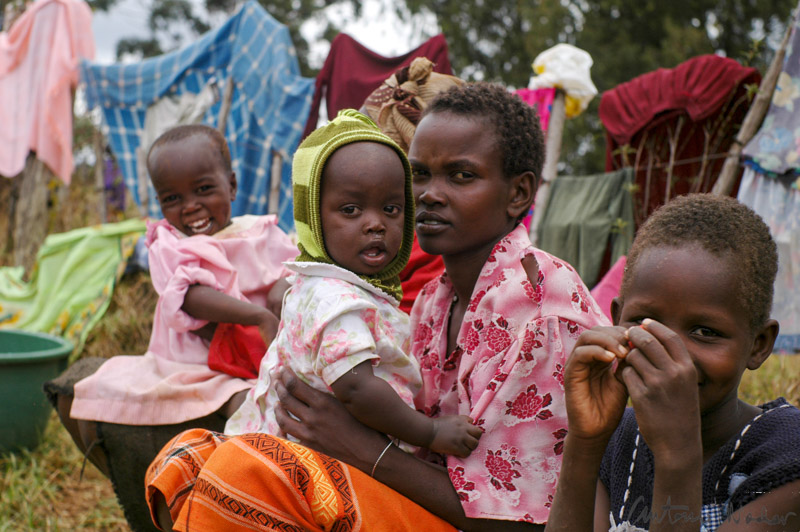
In the open air encampment, life has become a series of small, determined acts. She cradles her baby with steady arms, all too aware of what has been lost but unwilling to yield hope. Her eldest sits quietly nearby, grounding the group with a gentle presence. Around them, the world is reduced to the essentials: warmth from a shared cloth, the nourishment of togetherness, and laughter that slips through hardship like light through woven fabric. As she glances at the laundry fluttering in the wind, she remembers the days when washing clothes was just a chore, not a declaration of survival or dignity. Here, every day is a fresh decision to make home out of whatever remains.
Rituals of Survival
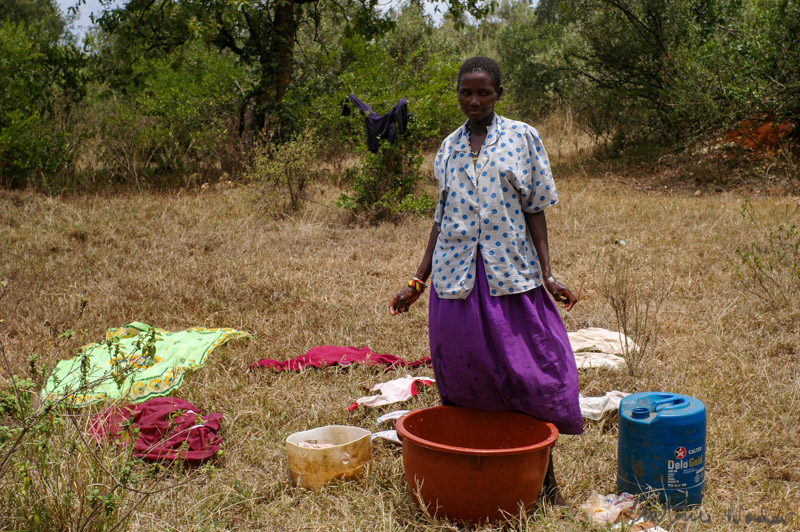
With hands chapped from sun and soap, she works through the family’s laundry—shirts, wraps, and scarves strewn across the brittle grass. Washing, rinsing, wringing out not only the dirt but some of the sorrow, she claims a piece of normalcy. The field was once just a crossing; now it is a home-in-transition, marked by chores and the laughter or fussing of children nearby. Each clean shirt, each carefully wrung skirt, is a gesture of defiance: a refusal to be defined by loss alone. Every splash and hum of activity tells the world, “We are still here, caring for one another, holding onto the patterns that make us who we are.”
Small Steps Forward

He toddles between blades of dry grass, one hand reaching out to a leafy bush, eyes drawn to the mysteries there. His vest—decorated with bears—flaps gently in the breeze, a tiny celebration of childhood. The older children and adults pause—watching, smiling, and remembering days when their own burdens felt lighter. In his every wobbling step and wide-eyed gaze, he carries the spark of the future. For a brief moment, the camp feels less like exile, and more like a place where possibility still grows.
At the Threshold of Hope
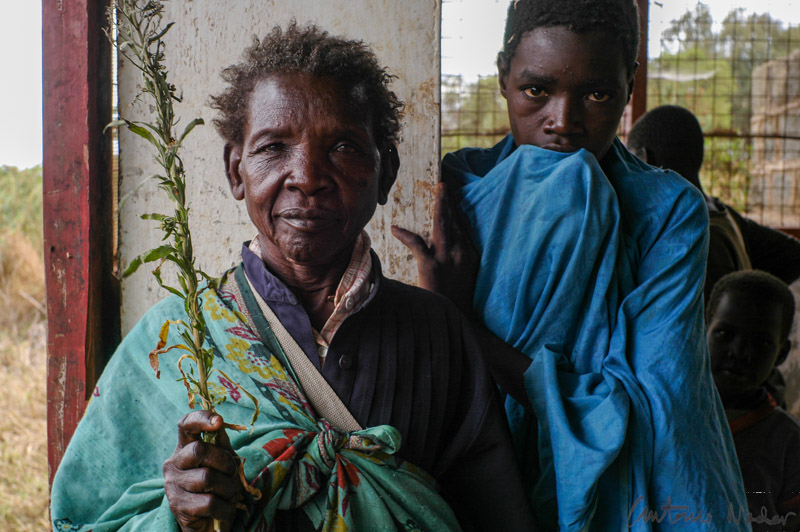
She stands tall at the battered doorway, her shawl a tapestry of memory. The branch in her hand is not merely a walking stick, but a link to rituals and prayers from before the flight. Children huddle behind her, trusting that her strength will be enough to shield them from the future’s unknown winds. As the sun rises beyond the makeshift wall, she whispers a wish to the day: that peace will take root and flower once again.
Meals in Exile
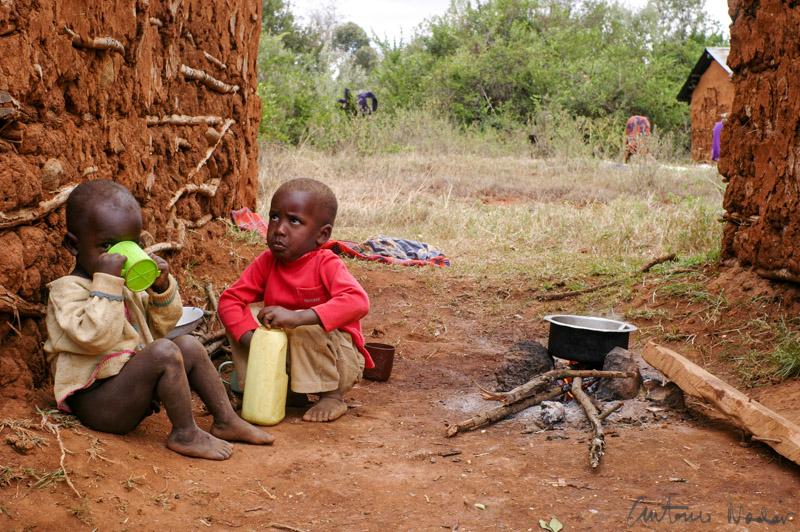
Leaning against the cracked clay wall, the children eat and drink slowly, savoring every mouthful. The aroma of simmering food mingles with dust, the warmth of the fire offering shelter against the harsh world outside. They talk quietly, sharing stories overheard from adults or tales invented to comfort each other. For them, this meal—however meager—is a bridge back to the reassuring routines of family and home. Their laughter and chatter briefly overwhelm the silence of loss, making the encampment a little more alive
Fields of Play
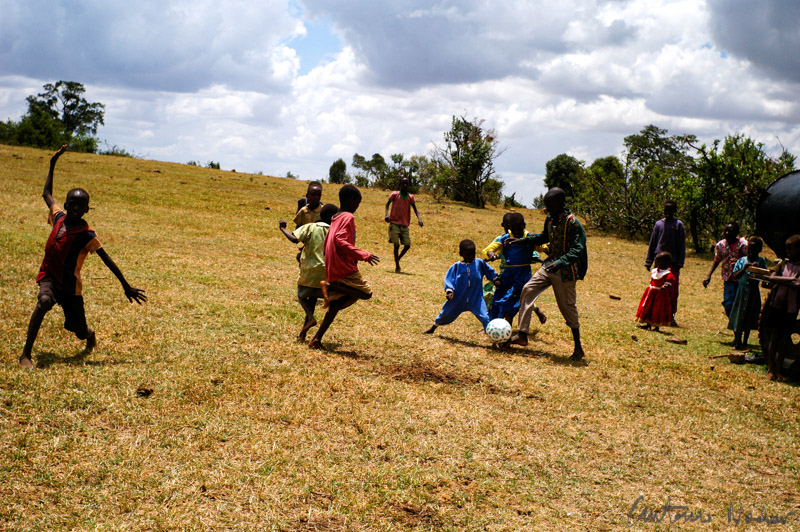
The field was empty when they first arrived, hearts heavy with loss and newness. Now, the scatter of children and the rising dust declare that life, in all its stubborn beauty, goes on. With every swift kick, they forget, for a breath, the uncertainty and grief beyond the grass. Their shouts are bright, their energy relentless—a rebellion against fear. If hardship has made them careful and wise beyond their years, it has not stolen their capacity for delight. Games knit friendships tighter and whisper a quiet promise: the future, however uncertain, still carries room for joy.
Keeper of Tradition
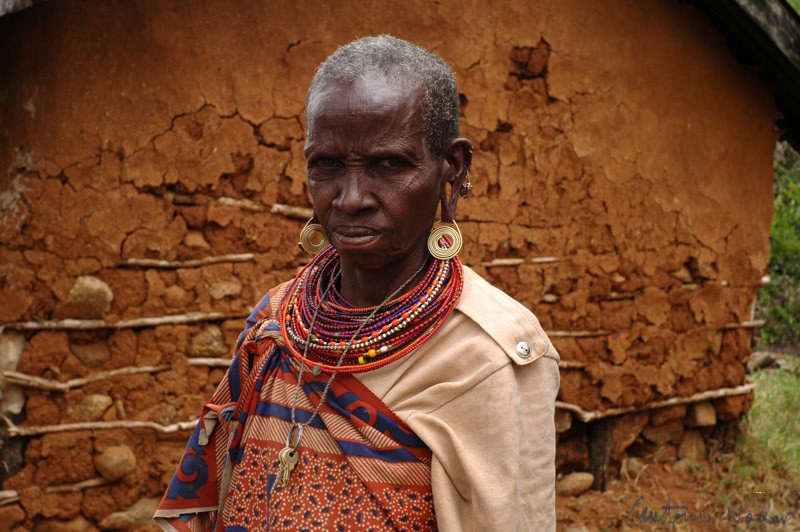
She stands as a living bridge between past and future, her neck loaded with the weight of countless beads—each a bead of memory, each strand a story. The hut behind her is battered, perhaps looted, but she refuses to be stripped of her heritage. As children play nearby and the sun bakes the red earth, she recalls the songs of her youth, the laughter of well-fed gatherings, the solemn promises of elders. Now, in exile, she wears her remaining beauty on the outside, a shield and a statement: “I am still here, still whole, still Jemp—no matter how far from home these feet may wander.”
Generations Displaced
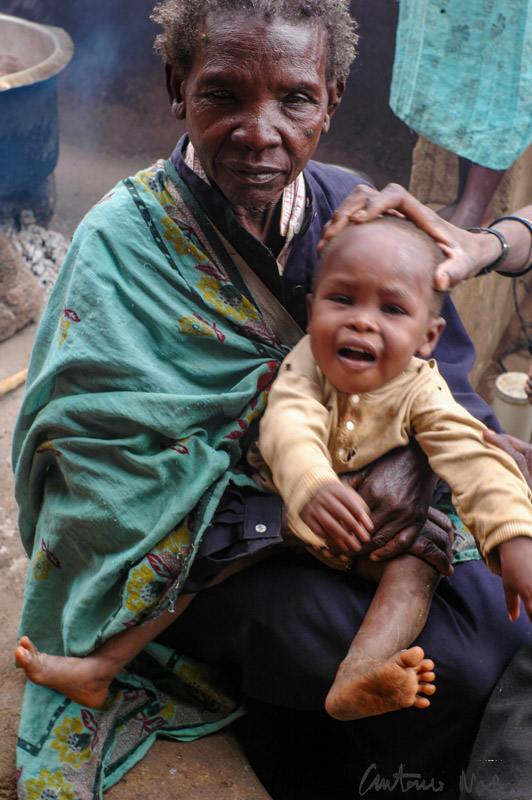
A woman sits near the smoky fire, the weight of a small child across her lap. Her arms, strong but worn, cradle the little one as she has cradled many before—her children, and now her grandchildren. The scent of boiling beans rises, mingling with dust and hope. She hums an ancient lullaby, its tune a thread binding her to those who came before and those yet to come. Around her, the turmoil of loss and exile swirls, but she draws her shawl tighter. She teaches the child the ways of survival, the stories of their people, and the warmth of a safe embrace.
Thank you to